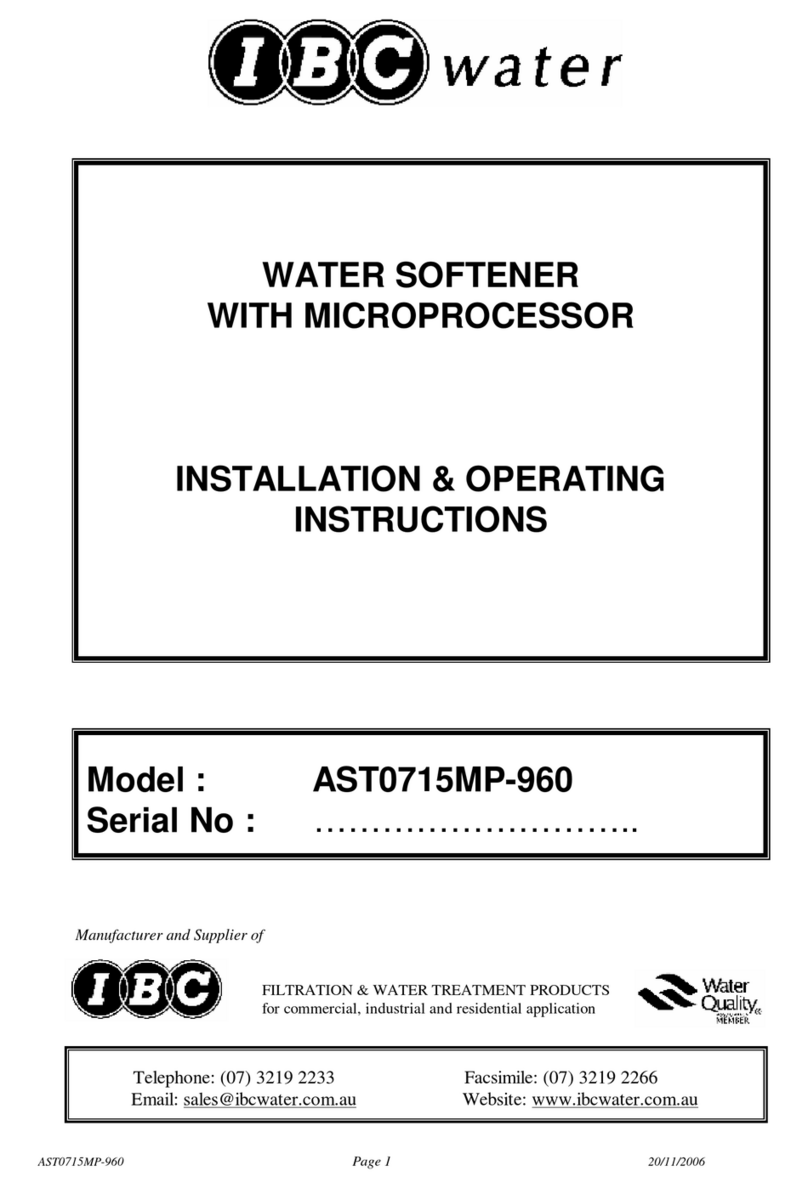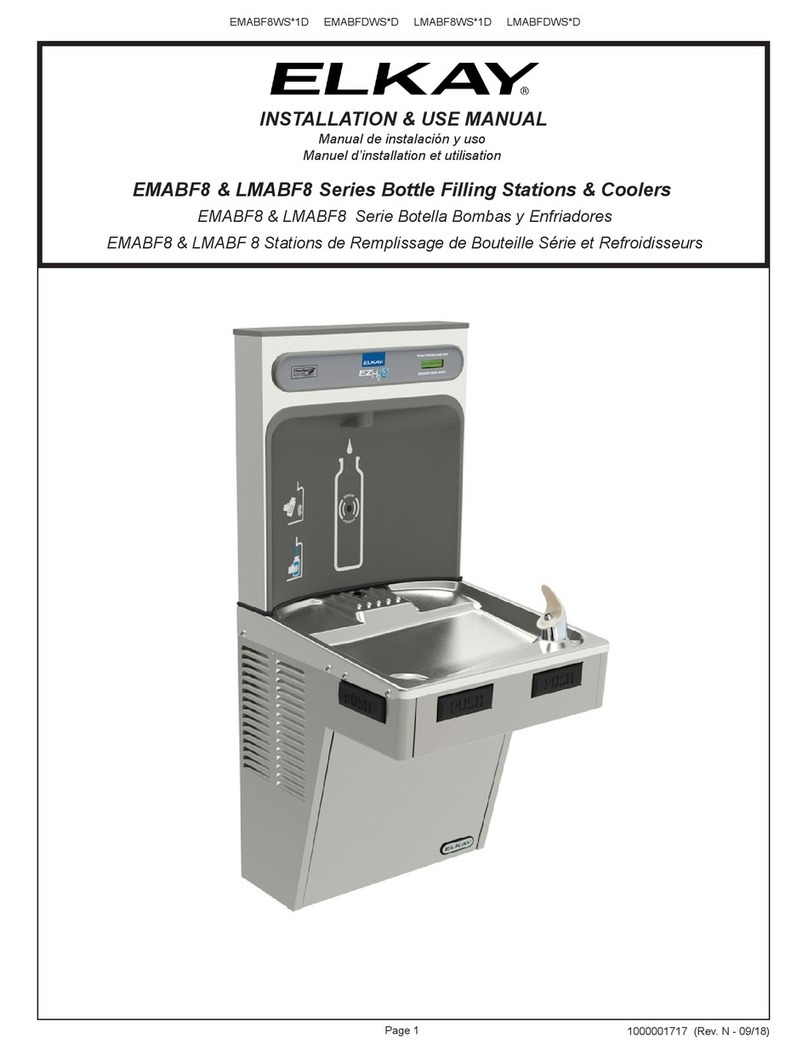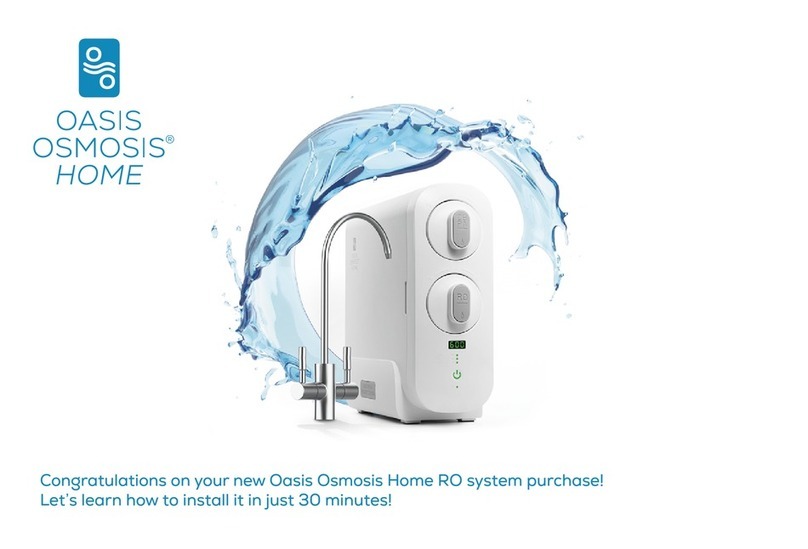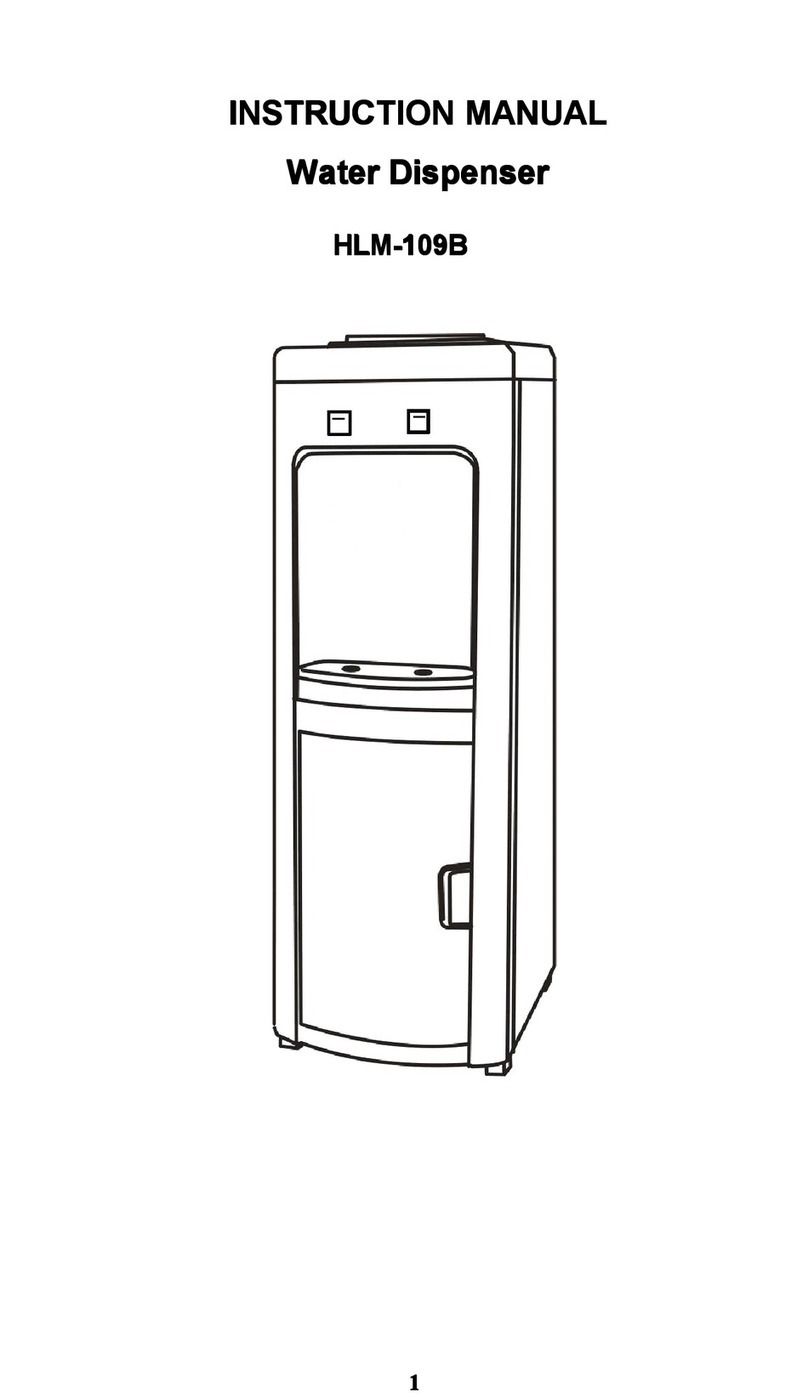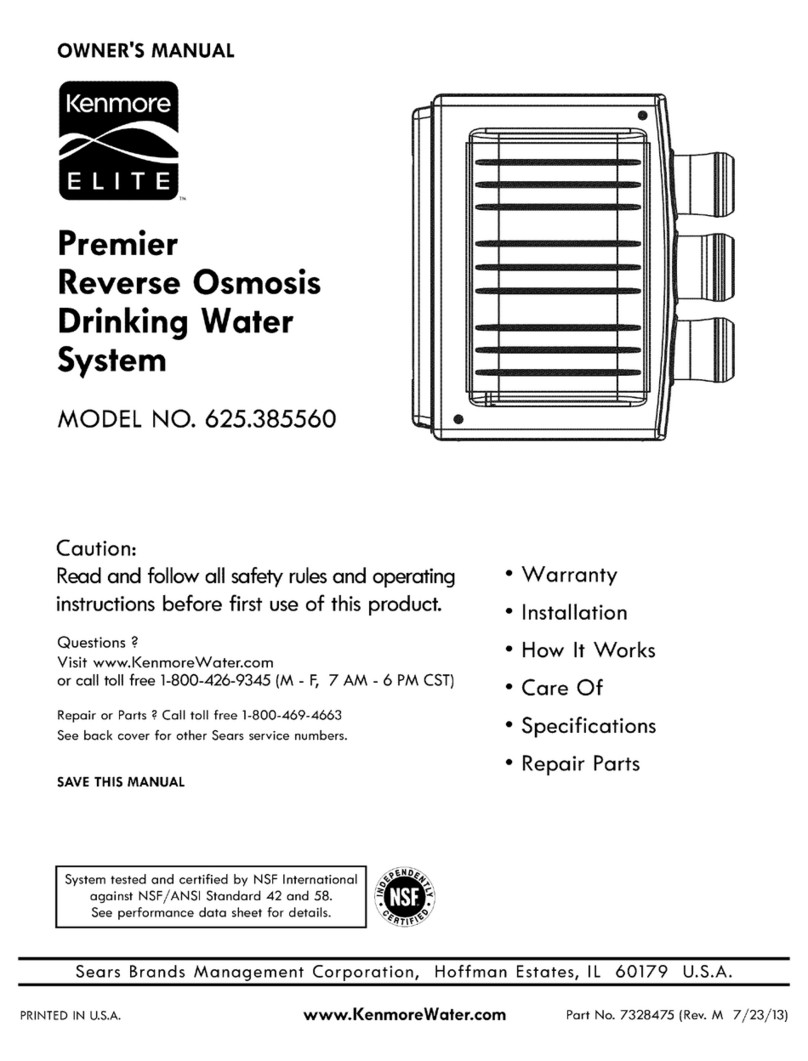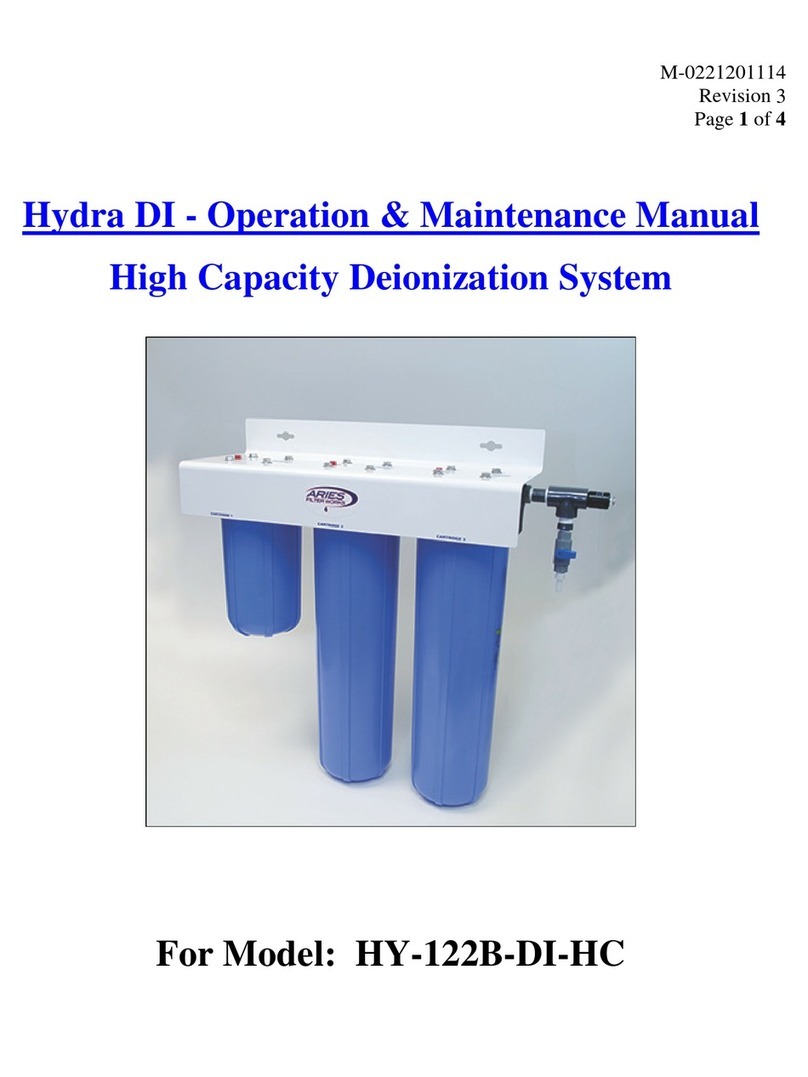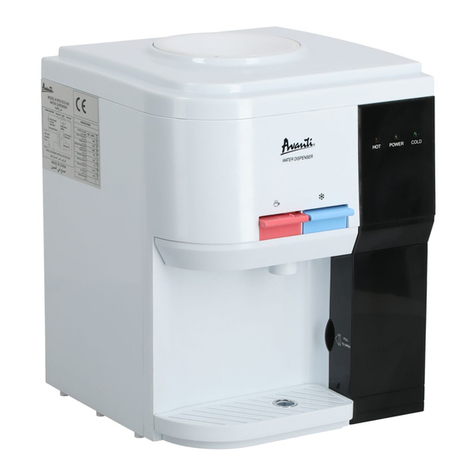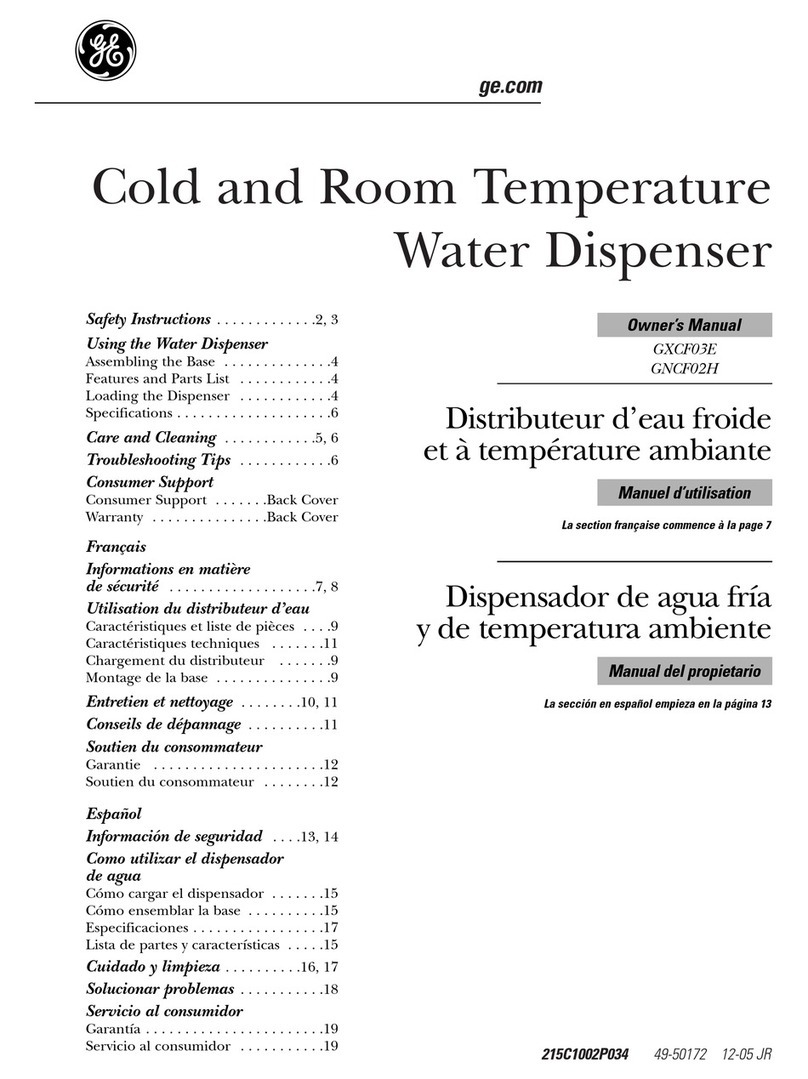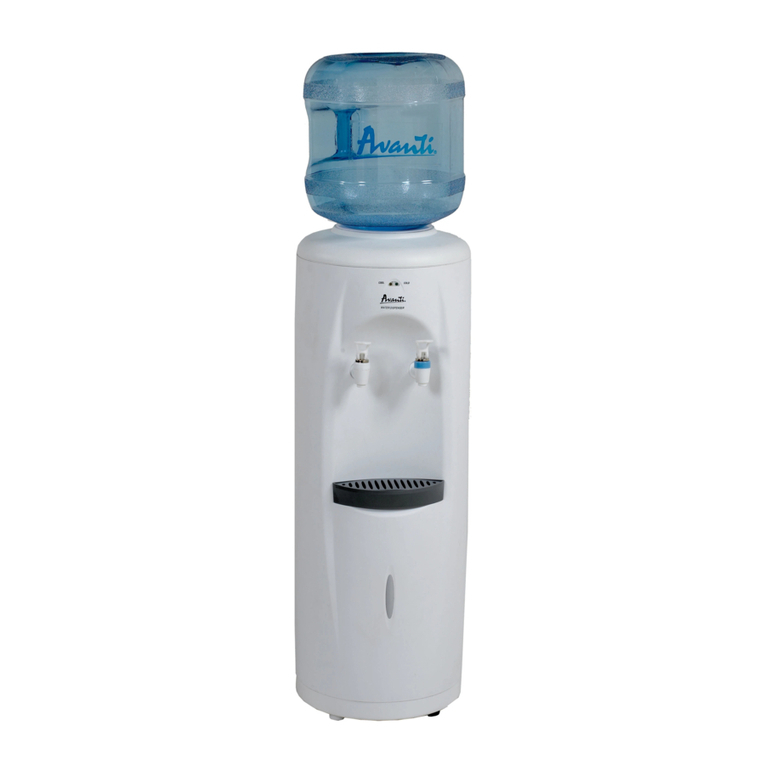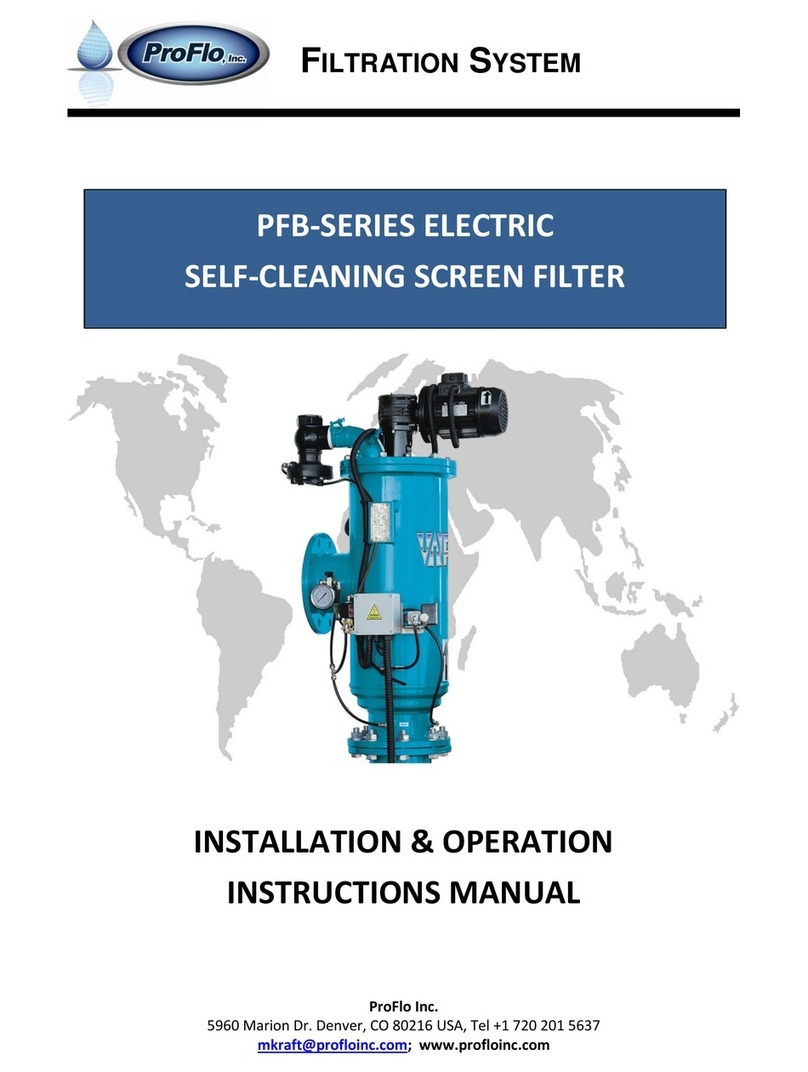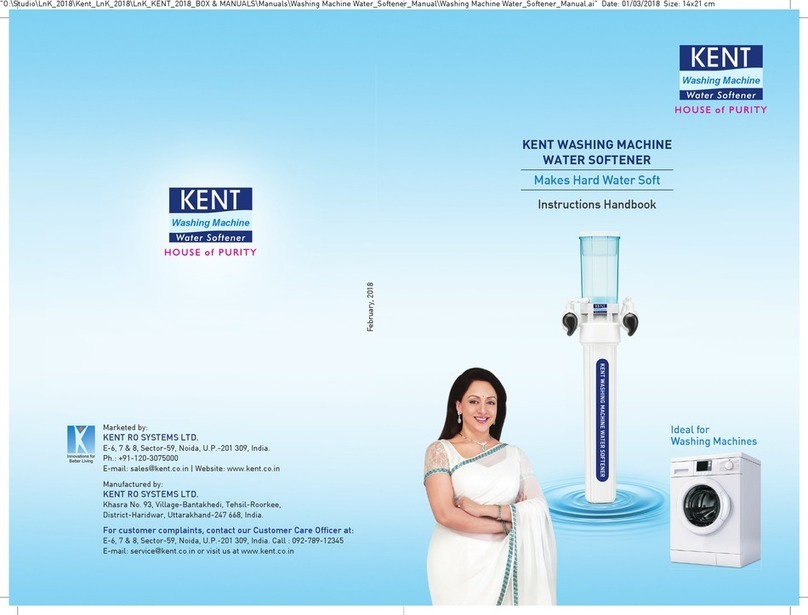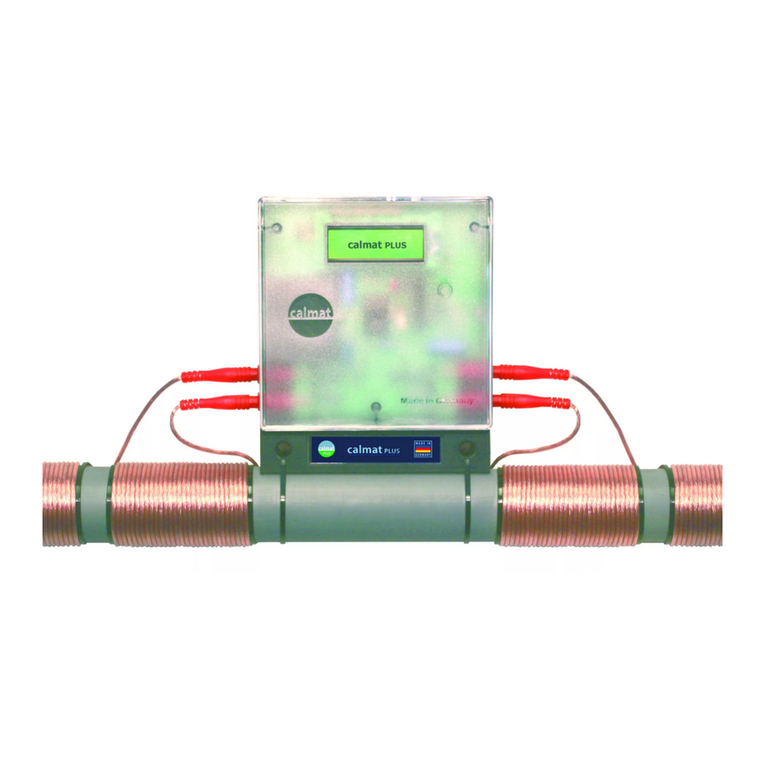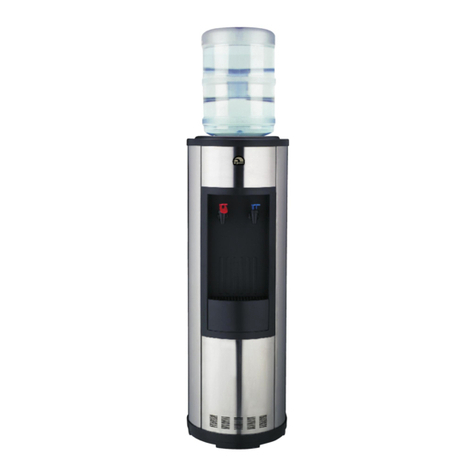5
BEFORE STARTING INSTALLATION
WHERE TO INSTALL THE SOFTENER
oPlace the softener as close as possible to the pressure tank (well system) or
water meter (city water).
oPlace the softener as close as possible to a floor drain, or other acceptable drain
point (laundry tub, sump, standpipe, etc.).
oConnect the softener to the main water supply pipe BEFORE or AHEAD OF the
water heater. DO NOT RUN HOT WATER THROUGH THE SOFTENER.
Temperature of water passing through the softener must be less than 49°C
(120°F).
oKeep outside faucets on hard water to save soft water and salt.
oDo not install the softener in a place where it could freeze. Damage caused by
freezing is not covered by the warranty.
oPut the softener in a place water damage is least likely to occur if a leak
develops. The manufacturer will not repair or pay for water damage.
oA 220 volt 50 Hz electric outlet, to plug the included transformer into, is needed
within 2 meters of the softener. The transformer has a 2 meters power cable. Be
sure the electric outlet and transformer are in an inside location, to protect
from wet weather.
oIf installing in an outside location, you must take the steps necessary to assure
the softener, installation plumbing, wiring, etc., are as well protected from the
elements, contamination, vandalism, animals, rodents etc., as when installed
indoors.
oKeep the softener out of direct sunlight. The sun’s heat will melt plastic parts.
TOOLS, PIPE and FITTINGS, OTHER MATERIALS YOU WILL NEED
oIn and out pipes to the softener must be at least 3/4” size. Some local codes
require a minimum of 1” pipe size. To plumb with 1” pipes, buy adaptors to fit the
1” pipe threads on the installation adaptors or bypass valve (see page 5). You
should maintain the same, or larger, pipe size as the water supply pipe, up to the
softener inlet and outlet.
oUse copper, brass, or galvanized pipe and fittings. Some codes may also allow
CPVC plastic pipe.
oALWAYS install a bypass valve or valves. Either use the optional valve (included
with some models), or 3 shut-off valves. Bypass valves let you turn off water to
the softener for repairs if needed, but still have water in the house pipes.
oDrain hose (3/8” or 7/16” inside diameter) is needed for valve and salt tank
drains. You can buy good quality, thick-wall, flexible hose at most hardware
stores.
oIf a rigid valve drain is needed, to comply with plumbing codes, you can buy the
parts needed (see page 8) to connect a 1/2 in. copper tubing drain.
oNugget or pellet water softener salt is needed to fill the brine tank (see page 10
and 118).
